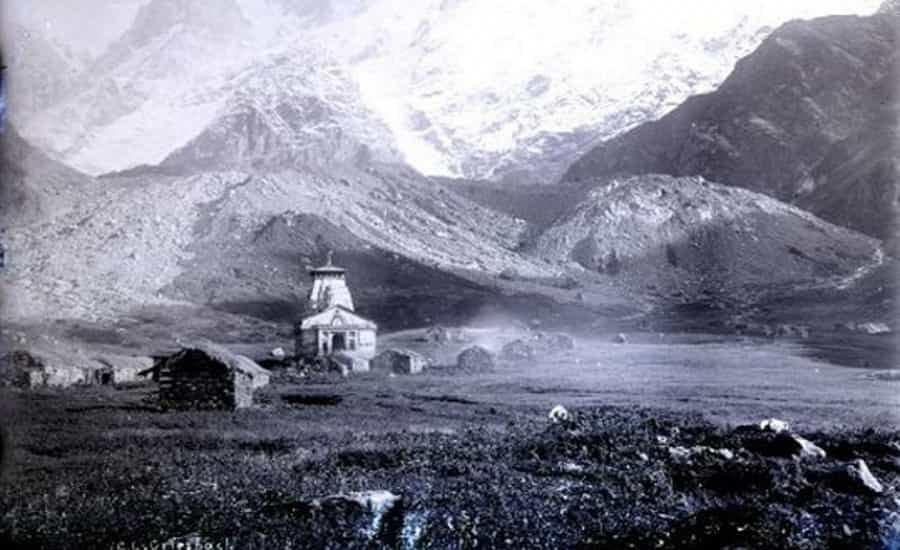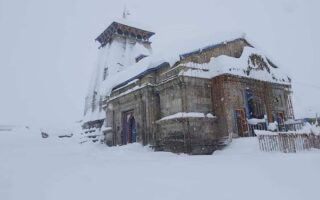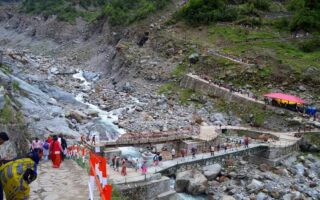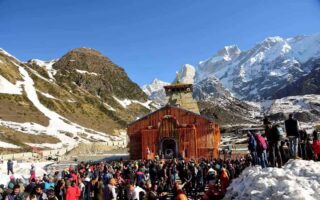Kedarnath is the third in the char Dham circuit. Dedicated to Lord Shiva, the shrine of Kedarnath is associated with folklore, mythology and history that make for interesting reading.
Ancient Lore
Kedarnath is one of the 12 Jyotirlingas and there are various versions of how the temple came to be. One of the most popular tales is that about the Pandavas. It is said the Pandavas came to the Himalayas, searching for Lord Shiva. Their purpose was to obtain his pardon for the sin of having killed their kin in the war. The Lord hid from them in a place now known as Guptkashi. The Pandavas pursued the Lord who had then assumed the form of a buffalo. Bhima recognized the buffalo as being the form of Lord Shiva and caught it by its tail. The buffalo thereupon split into two parts. The rear portion remained at Kedarnath and the front part fell in Nepal. On the hind portion of the buffalo a divine Jyotirlinga appeared and Lord Shiva gave Darshan to the Pandavas and absolved them of their sins. The entire region has traces of the Pandavas so there could be some truth to the lore. It is said that if you worship at Kedarnath sorrows depart from your life.

There is another interesting story about Kedarnath. Nar and Narayana, incarnations of Lord Vishnu, meditated before the triangular Shivlingam in Badrikashram. Lord Shiva was pleased and granted them a boon whereupon Nar and Narayana requested Shiva to reside permanently in the Jyotirlingam in Kedarnath. There is still another story about Parvati worshipping Kedareshwar because she wanted to unite with Lord Shiva who is also known as Ardhanareeshwara. The original pyramid shaped lingam is now housed in a temple made of huge slabs of stone on a large platform.
Modern Historical Research
A visitor to the Kedarnath temple may be intrigued by the yellow lines along the stone structure. The temple itself is 85 feet in height, 80 feet in width and 187 feet in length. The walls are quite thick, 12 feet and made of yellow stones and the temple stands on a raised platform 6 feet high. It is said the temple was constructed to withstand natural disasters that are common to this region. Even during the flash floods of 2013, there were massive landslides around Kedarnath but the temple itself, protected by large rocks, sustained very little damage.
According to Indian research scientists from the Wadia Institute of Himalayan Geology in Dehradun, Kedarnath could have been buried under the snow for over 400 years. The yellow lines are the result of movement of glaciers and melting of ice over the ages. This probably could have occurred during the little ice age from 1300 to 1900 AD when snow covered large tracts of the Earth. Lichenometric studies by these scientists show that glaciers started to form somewhere around the 14th century and were in position until 1748. In the Himalayas it is likely the snow covered Kedarnath and turned into glaciers that started to melt later on and uncovered the temple.
From a broader perspective, the entire area of Kedarnath can be considered as part of the large Chorabari glacier. The temple has the 22000 feet high Kedarnath Mountain on one side and the Kharchkund Mountain on the other side while the third side is occupied by Bharatkund standing 22700 feet tall.
This is one take. The locals say that the temple was built by Raja Bhoj of Malwa but some ascribe the temple’s construction to Adi Shankaracharya who had it built in the 8th century AD. He came upon the Jyotirlinga during his travels and decided to build a shrine to make the place popular with devotees of Lord Shiva.


